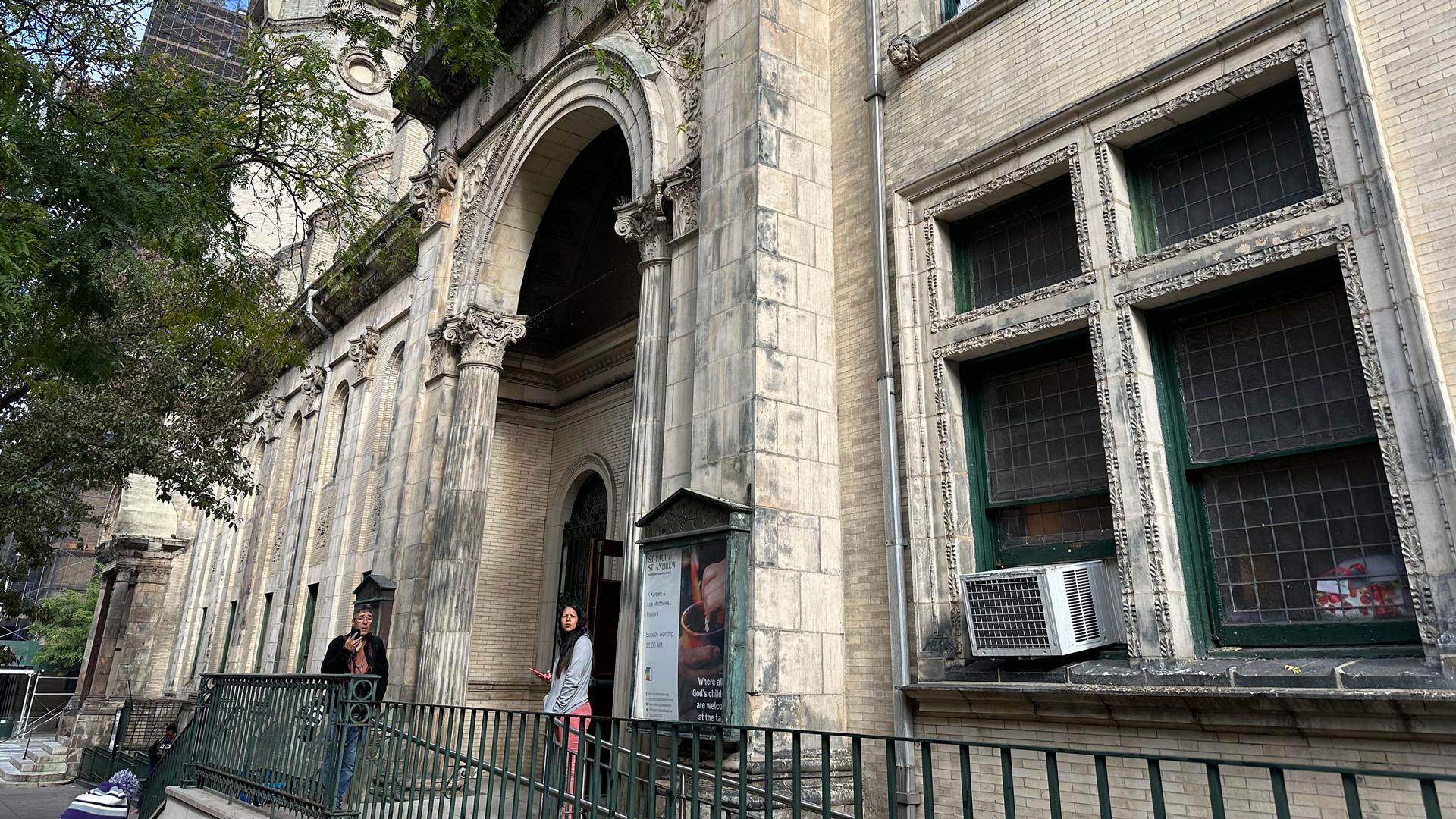At the St. Paul and St. Andrew United Methodist Church in Manhattan’s Upper West Side, many newly arrived immigrants find respite.
Once a week, about 200 people come for “Miracle Monday,” an event offering food, clothes, diapers, toys and legal help.
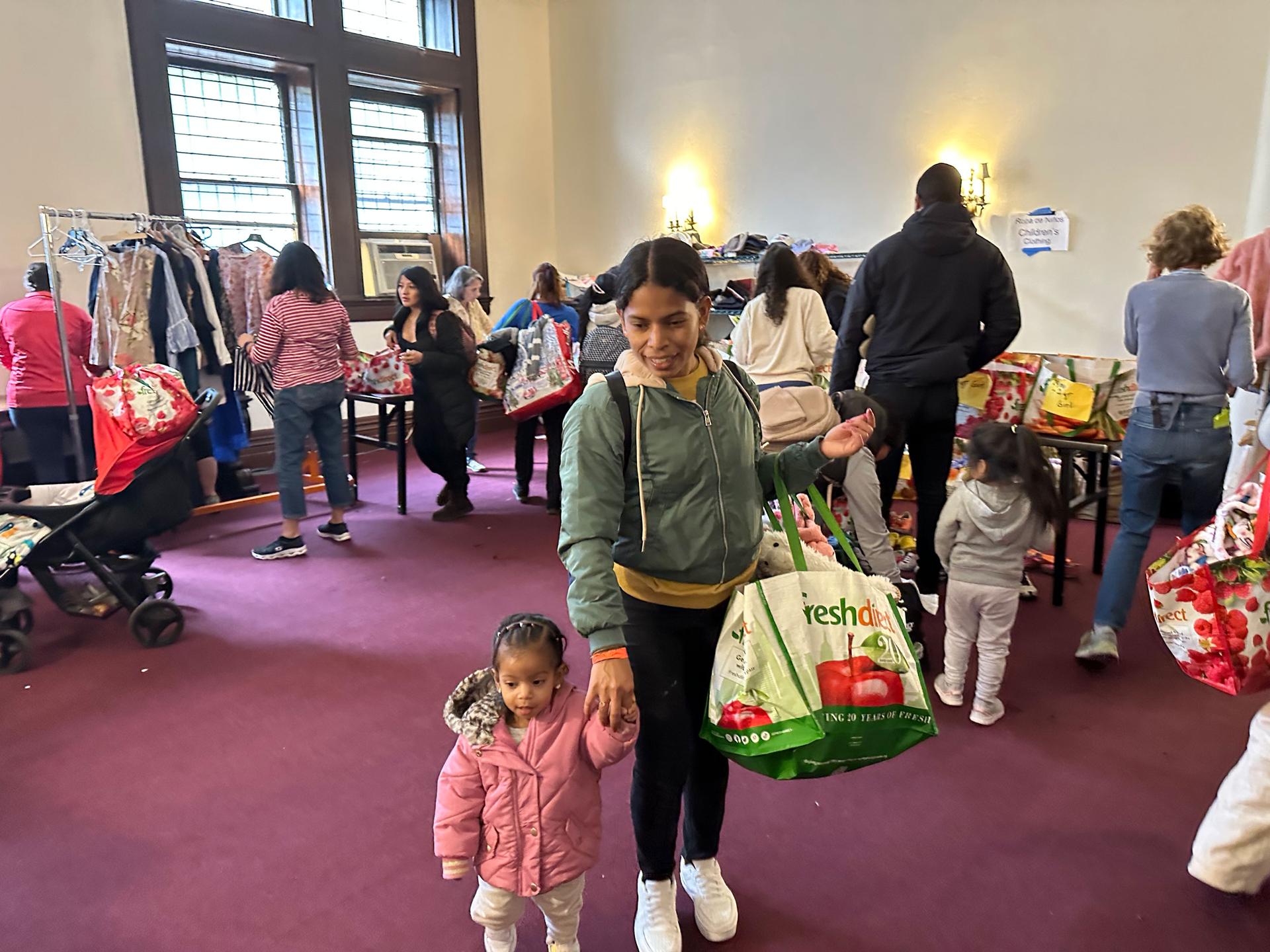
But for Angel Herrera, a 28-year-old immigrant from Venezuela, the church was home, too.
“My bed was that one,” he said, pointing to a folding bed inside a small, carpeted room on the third floor of the church. There were two other immigrants sleeping in this room with him, and another three in a similar room next door. They had a bathroom down the hall, and showers in the basement.
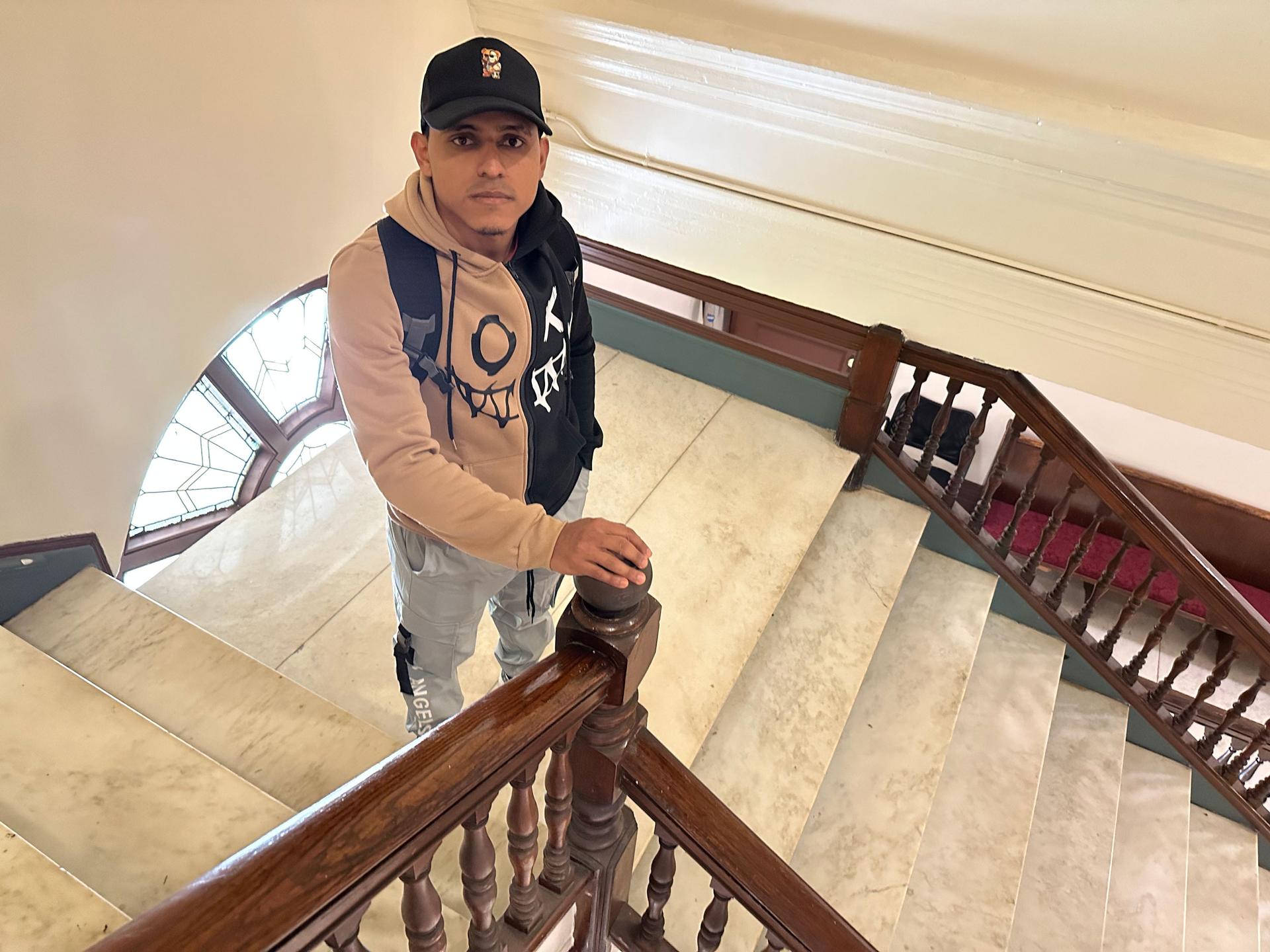
When Herrera arrived in New York in May, he came straight to St. Paul and St. Andrew because his cousin was already living here.
Herrera is one of 15 immigrants who have lived in this church since August of last year. He said he is happy to have moved to an apartment with others at the end of September, but he also has great memories of living in the church.
“Here one could feel calmness, a lot of peace,” he said.
As many as 50 churches, synagogues, mosques and temples in New York City are slated to become home for nearly 1,000 immigrant men. The two-year plan announced by Mayor Eric Adams in June means the city will pay houses of worship to help fill the desperate need for shelter, as more immigrants continue to arrive.
Since April of 2022, New York has received more than 126,000 immigrants and each day, about 600 new people arrive. But the city’s red tape is making the process of turning faith-based organizations into official temporary shelters much harder than anticipated.
St. Paul and St. Andrew has served as home for several immigrants but it is not applying for the new program.
Rev. Lea Matthews, their associate pastor, said the church’s old building can’t meet the program’s requirements to have sprinklers, a centralized alarm system, showers and space for 19 beds.
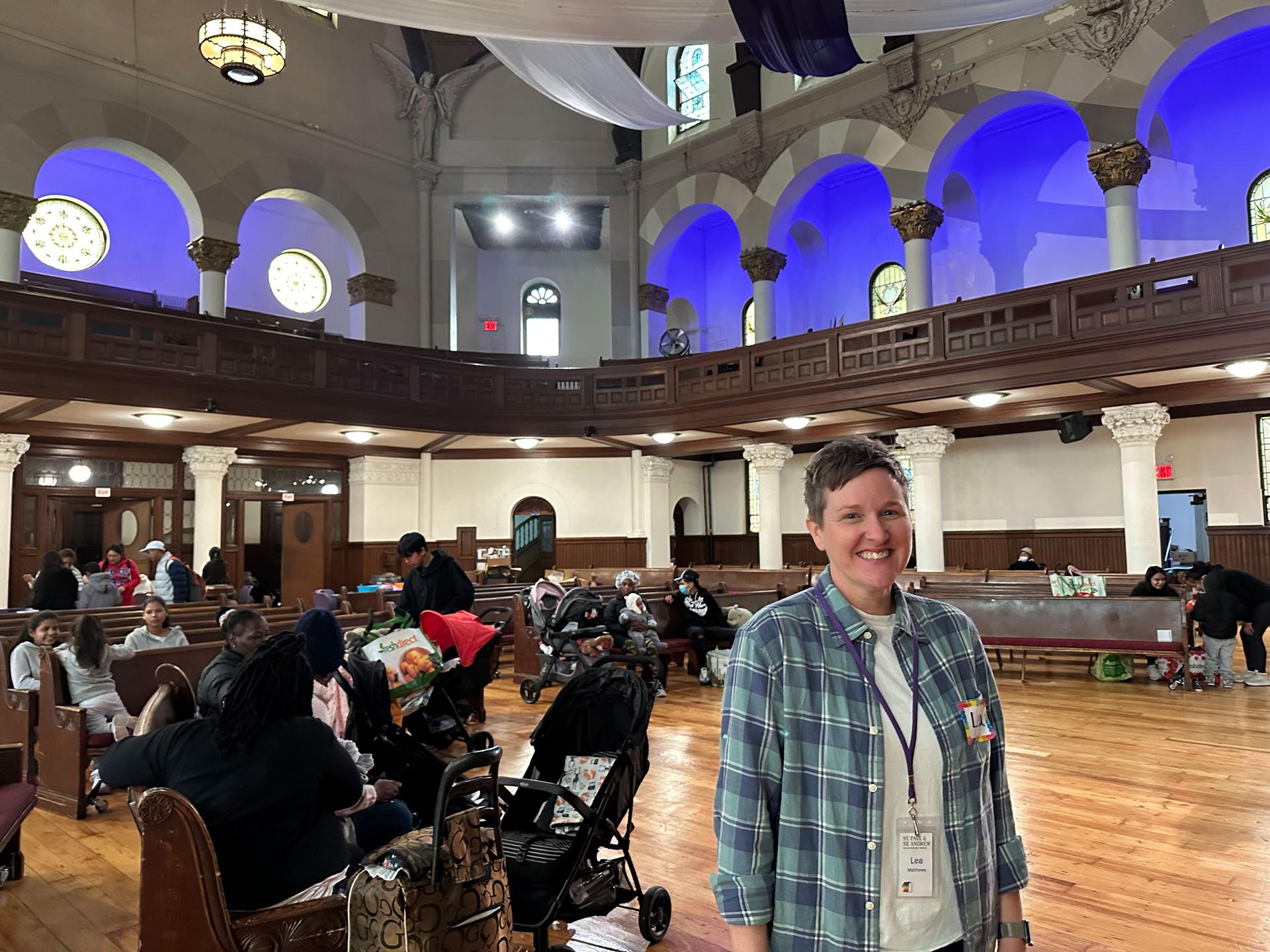
“A great many of the ideas that birthed that program came out of our group, namely, out of this congregation even — and we wouldn’t qualify. So many others are having that same experience,” she said.
More than 200 houses of worship have applied for the program. But only two have been approved so far.
Gale Brewer, a city council member that represents parts of Manhattan, including the Upper West Side, said the problem is that the Fire Department is imposing standards that are tougher than for permanent shelters.
“The Fire Department — with all due respect — is putting too many roadblocks,” she said.
Mayor Adams’ administration and the Fire Department both declined to be interviewed for this story.
Council member Brewer said she supports the new program because she believes houses of worship offer many advantages than regular shelters.
“People get jobs. And people from the congregation get to know them and give them opportunities that you would never get in a shelter. And also it’s really safe,” she said.
The only two churches that have been approved by the program are in the Bronx: Christ Disciples International Ministries and Greater Eternal Baptist Church.
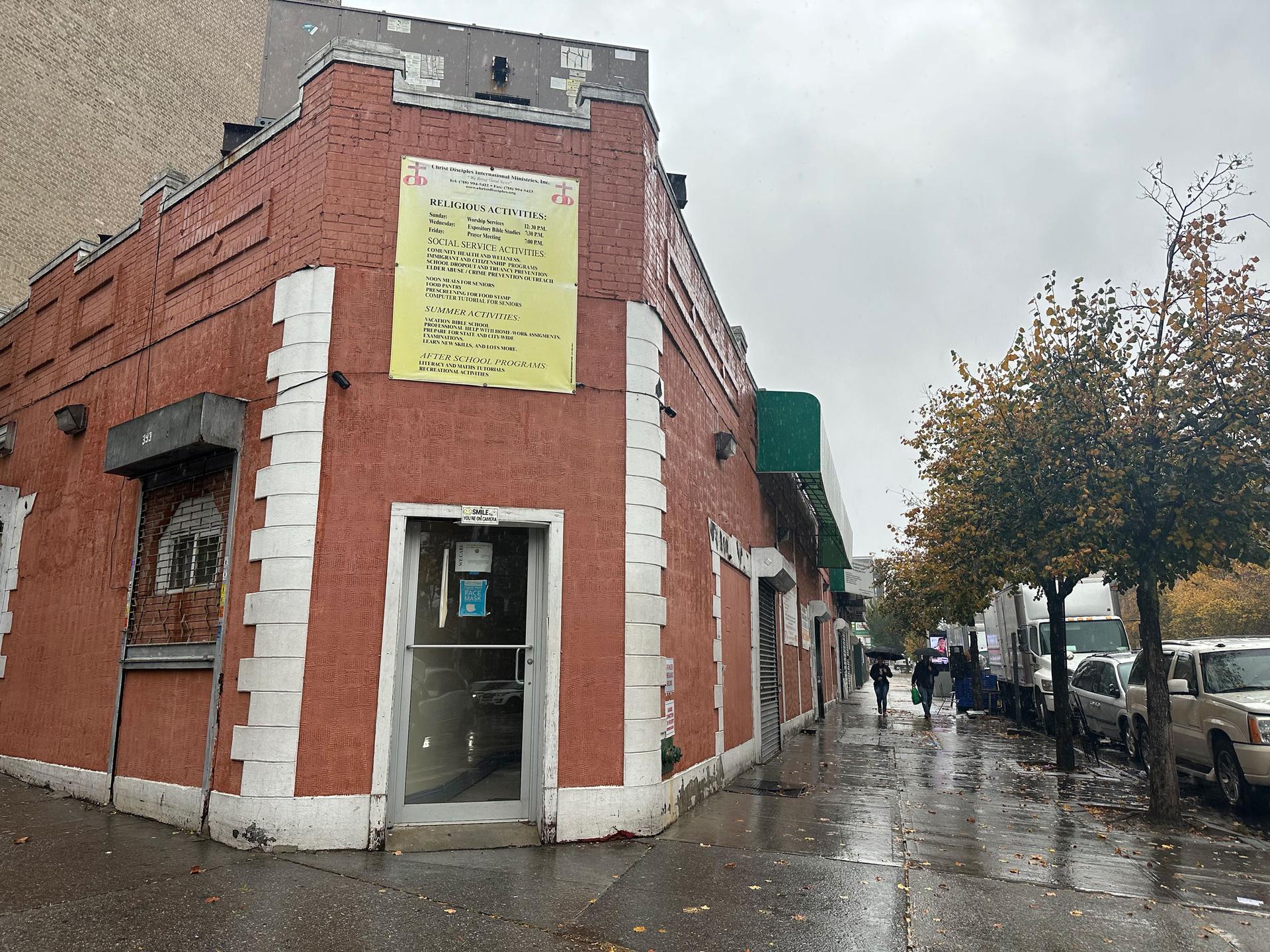
Immigrants stay at both churches only in the evening, from about 7 pm to 7 am. During the day, those who don’t have a place to go can visit daytime centers opened by the city.
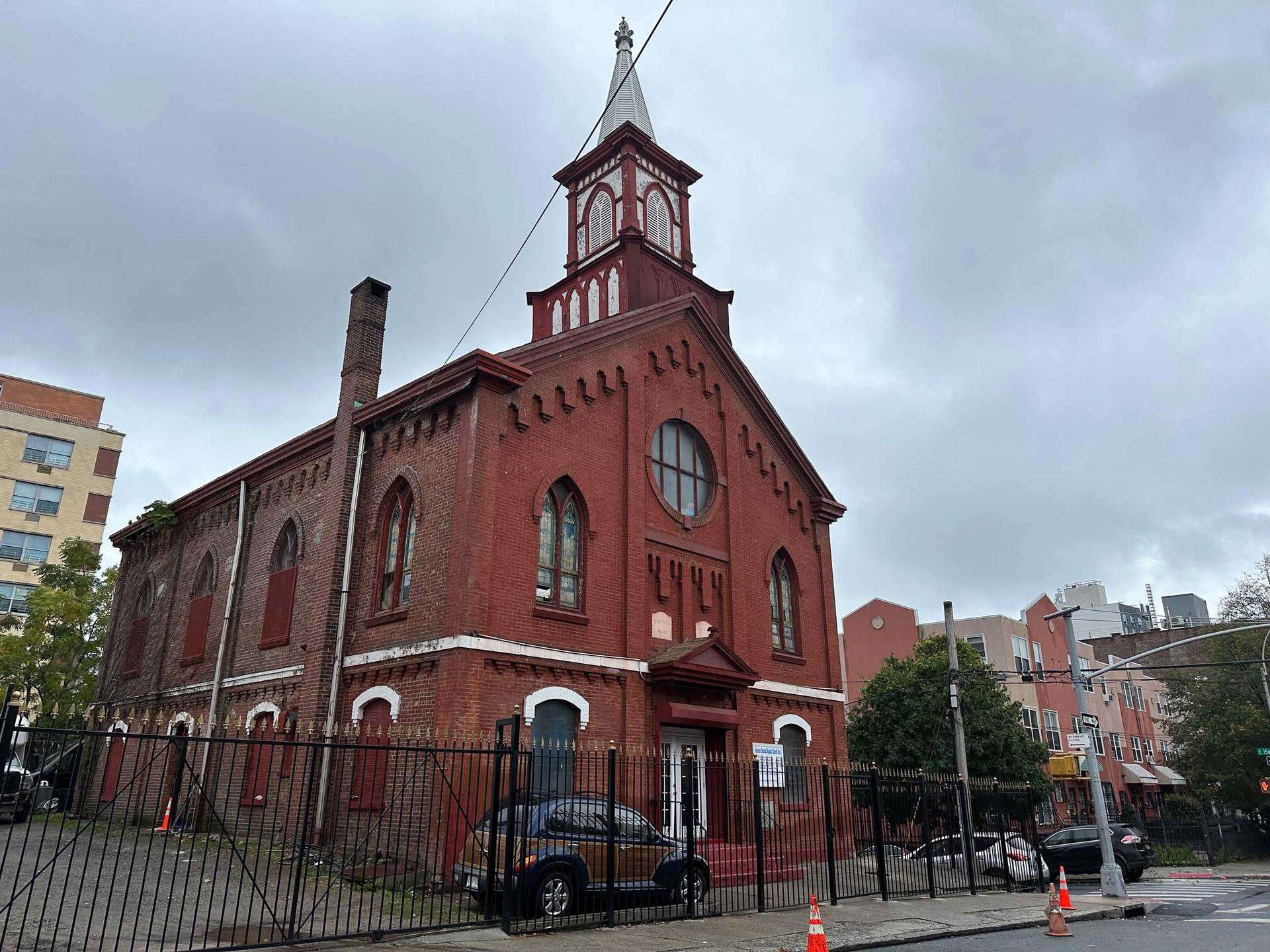
The pastors of both churches declined interviews because, as part of their contracts with the city, they said they are not allowed to talk to the press.
For many houses of worship that have informally housed either immigrants or other homeless individuals, and provided food and other services, the role seems to be a natural fit.
Rev. Matthews from St. Paul and St. Andrew said she sees social work as a fundamental part of the modern church.
“To imagine that in order to connect with the holy, you have to come into a building, sit in a pew and receive. This is an outdated model. The nature of church is to connect to the community,” she said.
Several new members of her church seem to agree.
In the past two years, their congregation increased by almost 10%, specifically because of their social justice work, according to Rev. Matthews. That’s against the national trend, where religious affiliation is down, even among Latinos.
New York has a long tradition of religious organizations serving as shelters, according to Kenneth Guest, an anthropology professor at Baruch College.
“This is a program of the city now that seems to be recognizing that religious communities have been doing this all along,” he said. “But at the same time, it might not be recognizing the complexities of trying to offload a government program onto a not-for-profit religious organization.”
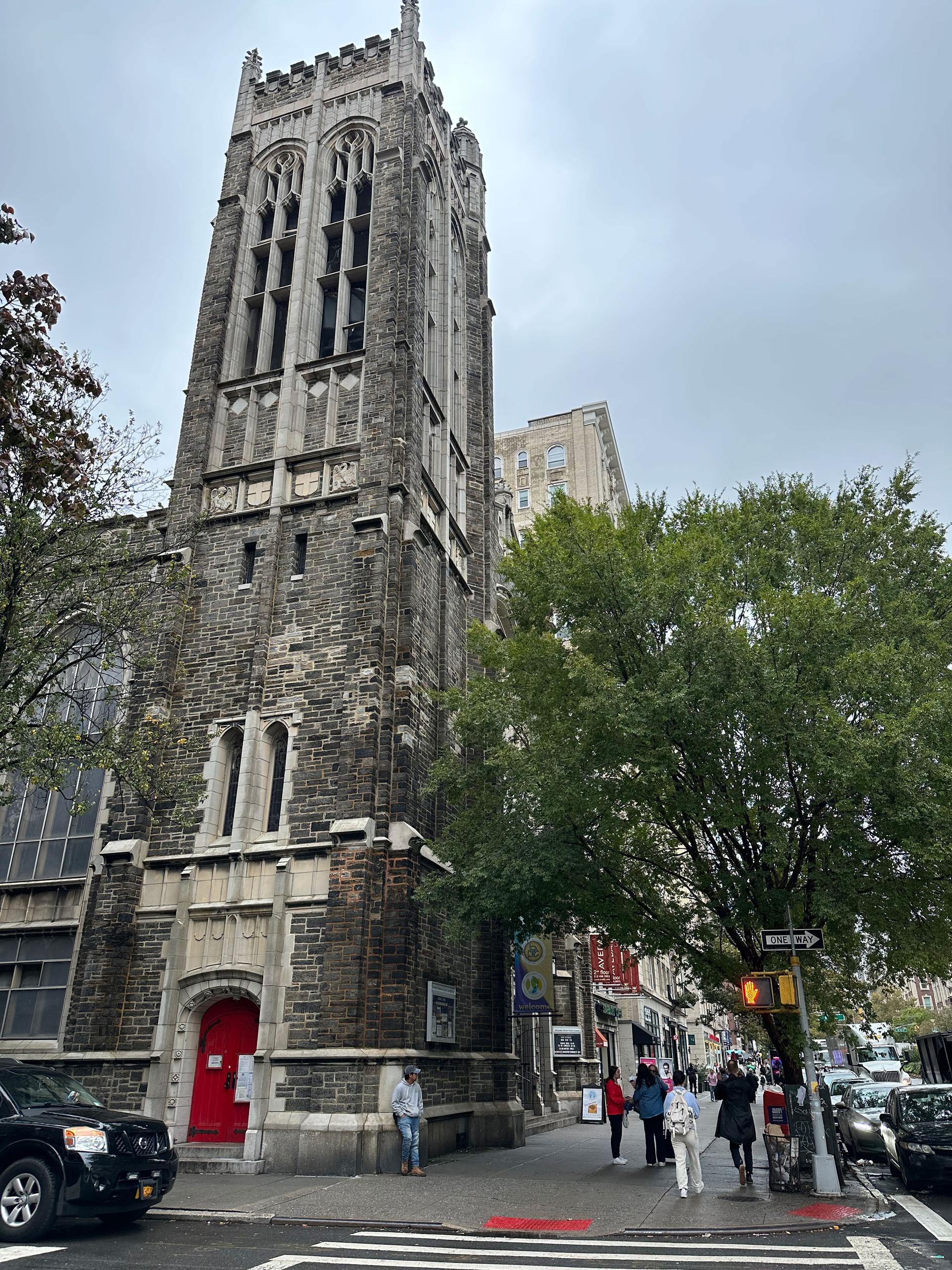
Guest, who studies immigration and religion, said that a major shift happened in 1981, when a consent decree established a right to shelter in New York City. Two years later, Mayor Ed Koch asked religious institutions to help provide beds for the homeless population.
“I think for a lot of churches and synagogues, engaging as part of the homeless shelter system starting in the 1980s was a major rethinking of how they did church,” Guest said.
One of the oldest church shelters in New York City is located in the basement of Broadway Presbyterian in Morningside Heights, across the street from Columbia University. The shelter served as one of the models for the new program. The 3,000-square-foot space serves as a soup kitchen by day and at night, it converts into a sleeping area for 19 homeless men and women.
Isaac Adlerstein, the executive director of Broadway Community, a nonprofit that runs the shelter and soup kitchen, said he is disappointed that the city program is behind schedule.
“It’s incredibly frustrating,” he said. “When we first conceived of expanding this, the idea was to create a shelter model that is a very low barrier for institutions to enter into.”
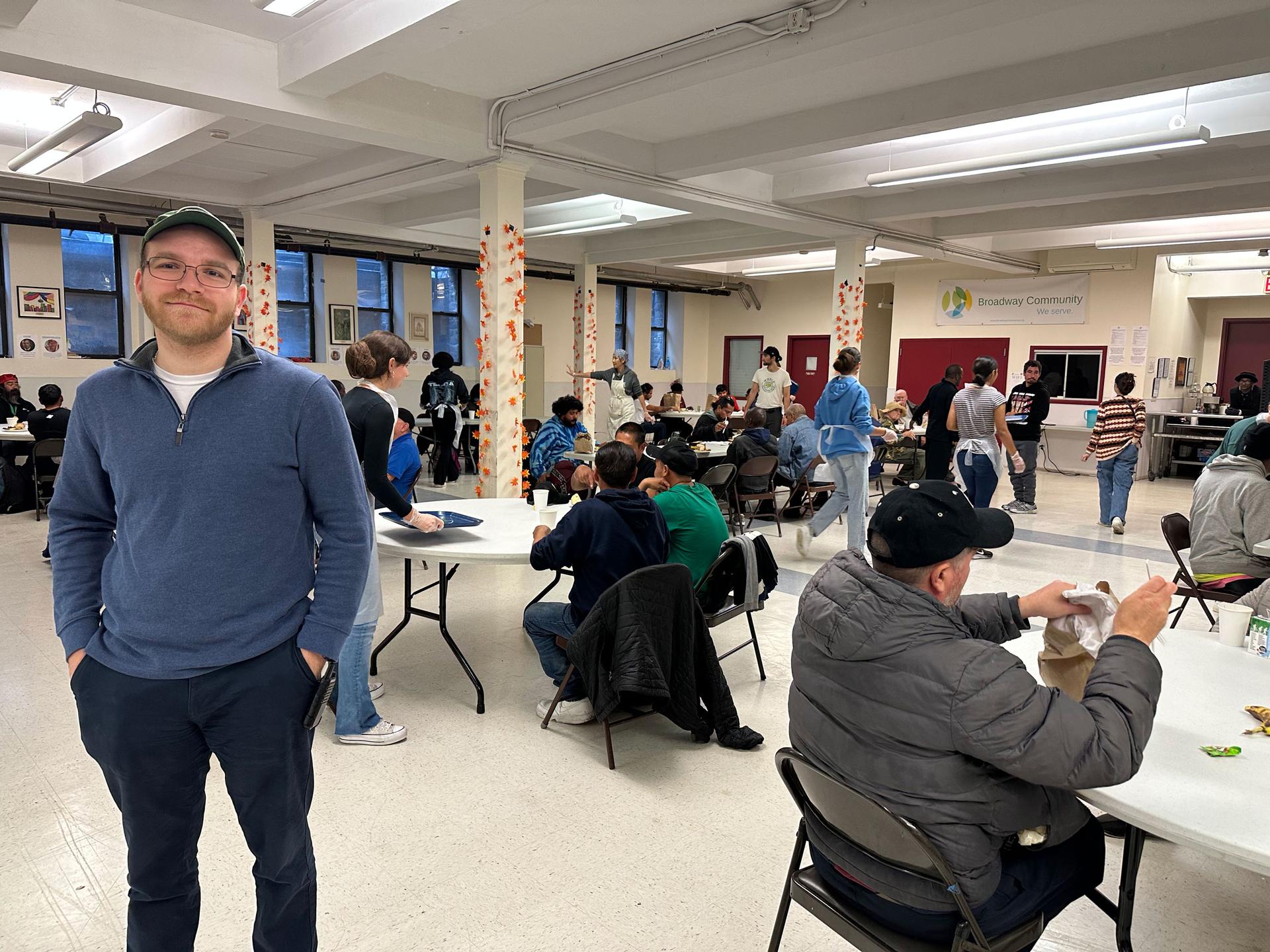
Adlerstein said one of the biggest advantages of shelters inside religious institutions is that they are cheaper. He said the cost in the regular shelter system is $138 per day per person, and in houses of worship it’s $65.
“That means you get almost twice as much bang for your buck,” he said.
New York City has thousands of houses of worship. Adlerstein said that he believes 1,000 of them could be serving as shelters, housing 15 people each.
“That’s 15,000 beds added to the shelter system. And suddenly, you are able to hit the pause button on the problematic shelters, fix them up, make the system better overall, I think it just makes sense,” he said.
According to the nonprofit organization Coalition for the Homeless, homelessness in New York City has reached the highest levels since the Great Depression and there are more than 85,000 people sleeping each night in New York City’s main municipal shelter system.
In September, Adlerstein sent some ideas to the city to help the new program move forward. He proposed to reduce the number of beds in each religious institution to 15, which would avoid the fire code, while increasing the pay per person so it would still be viable. He also suggested that the mayor issue an executive order to temporarily stop the enforcement of the code. He hasn’t heard back yet.
A few weeks ago, Venezuelan immigrant Angel Herrera was back at his old home, St. Paul and St. Andrew, to get legal help. He said living there made him more connected to religion, too.
“I was able to hear the services from far away and I liked them very much,” he said.
